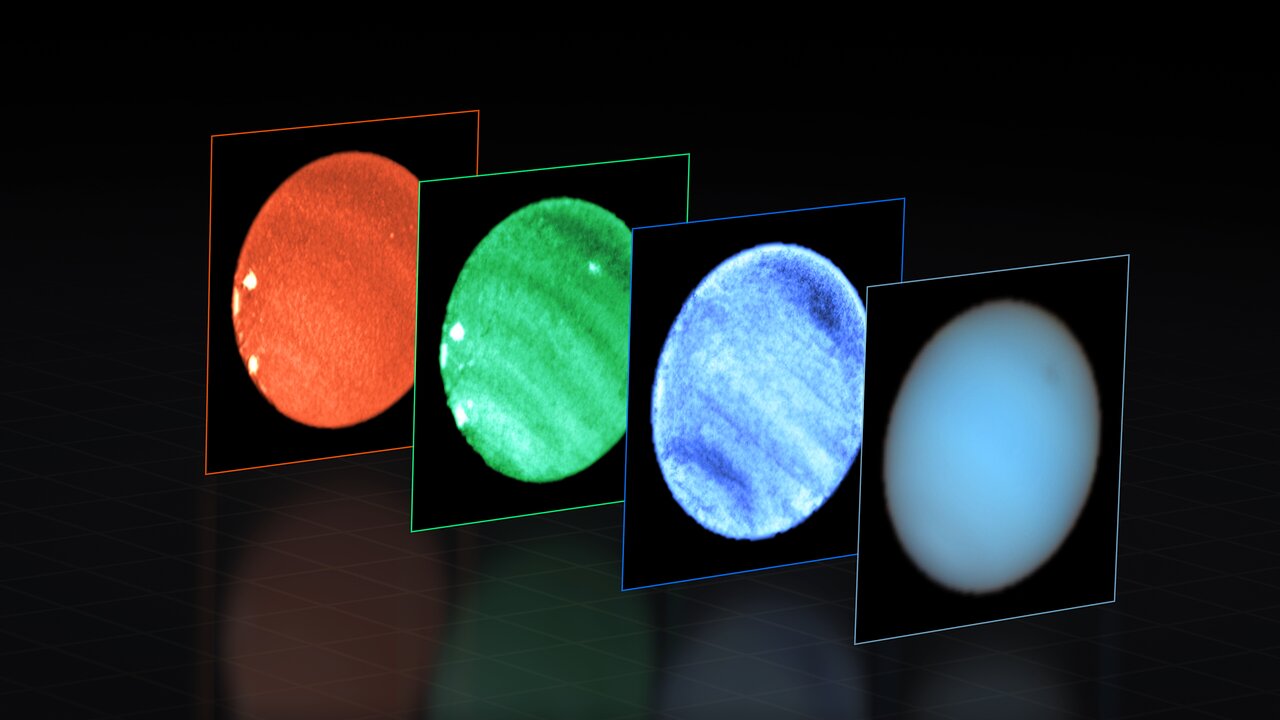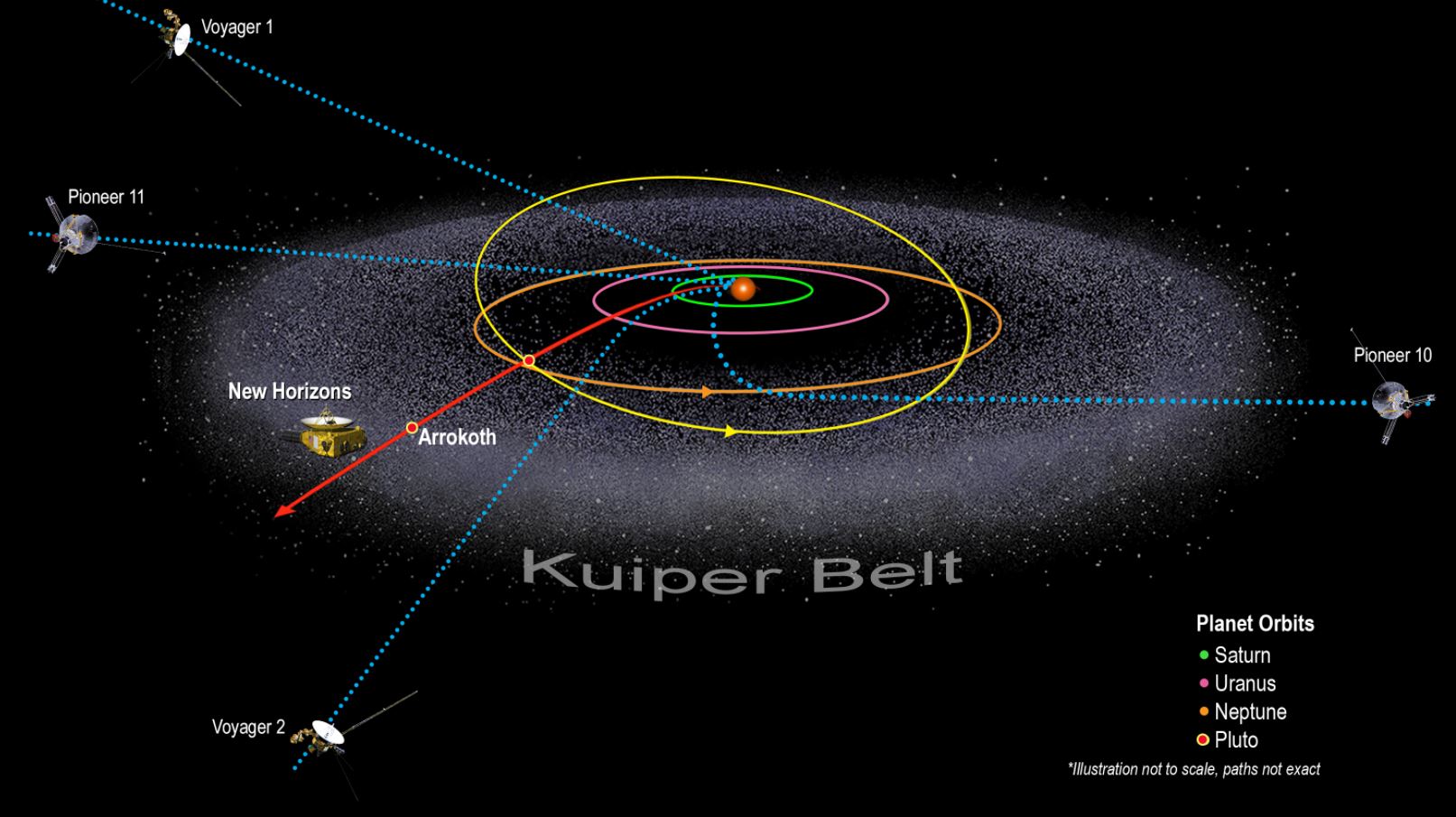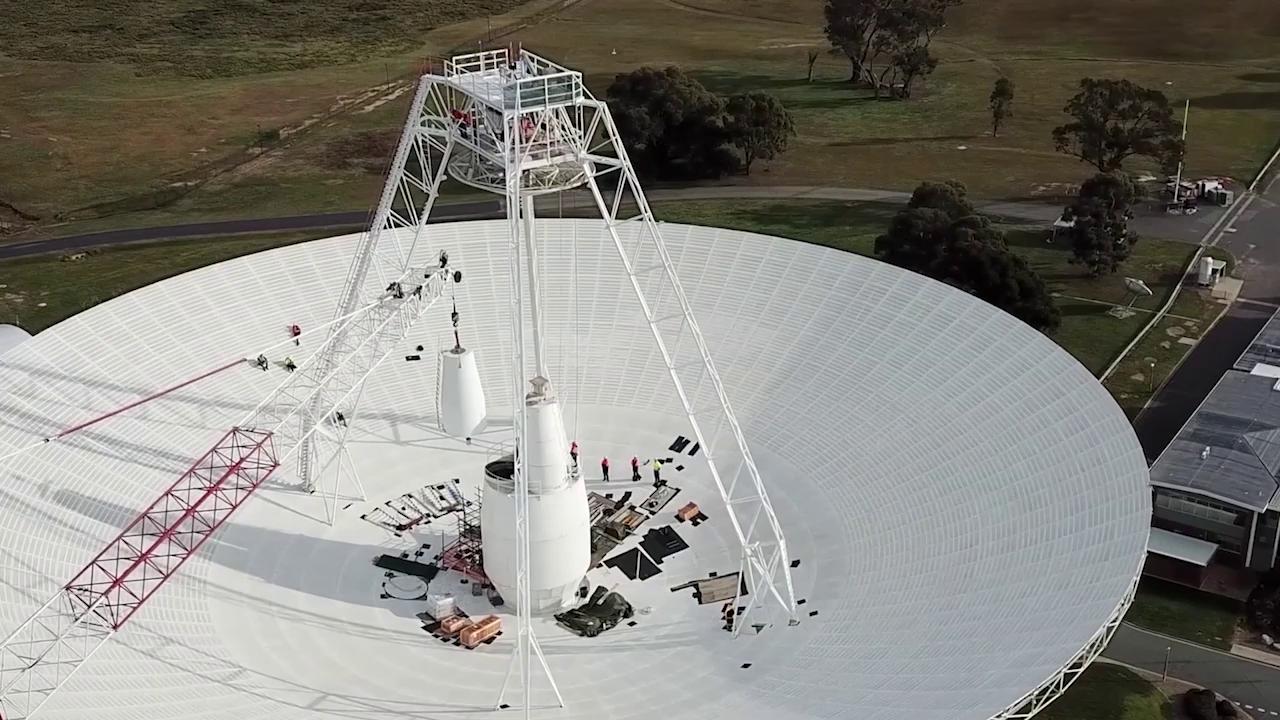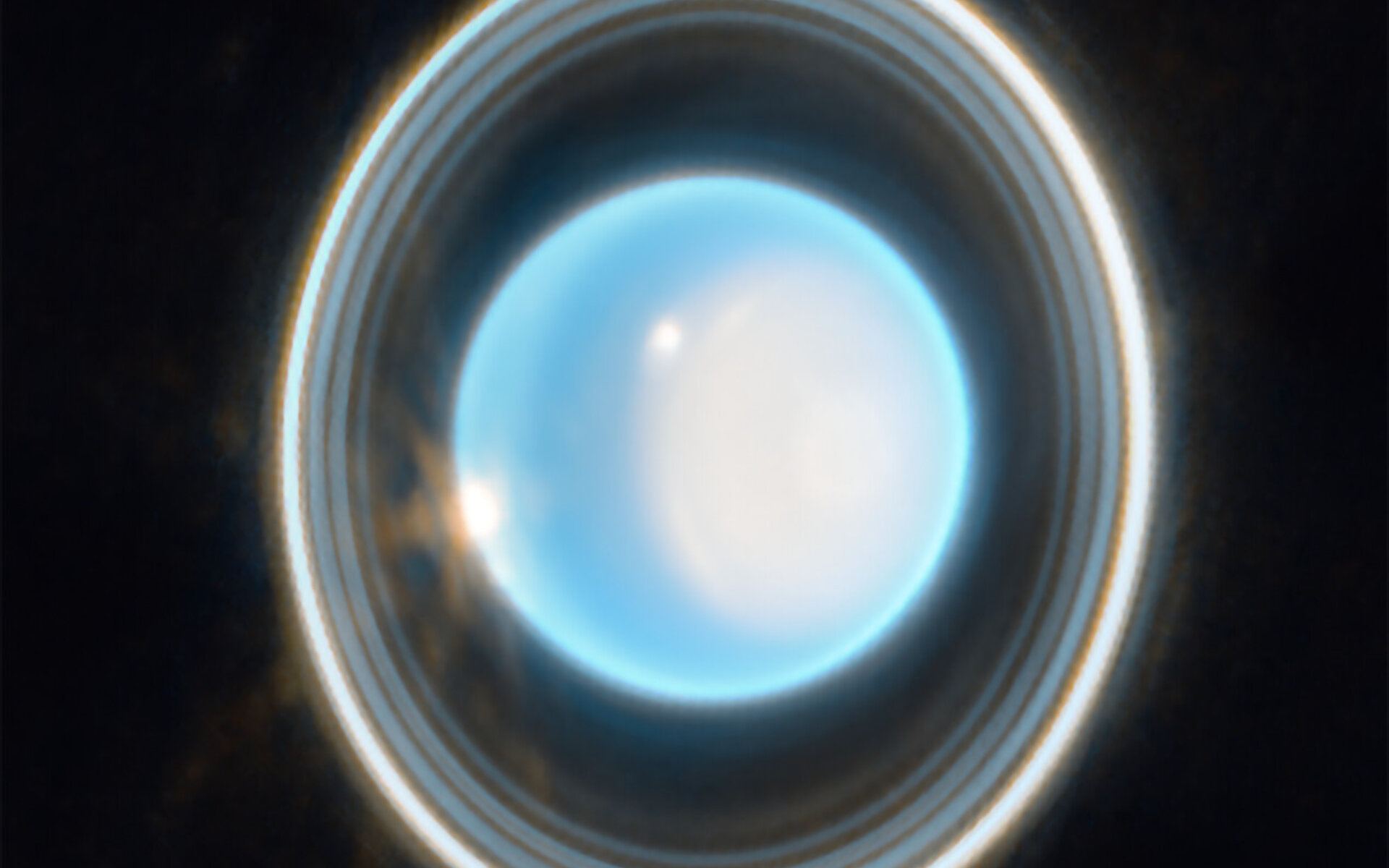Voyager 1 was launched waaaaaay back in 1977. I would have been 4 years old then! It’s an incredible achievement that technology that was built THAT long ago is still working. Yet here we are in 2024, Voyager 1 and 2 are getting older. Earlier this week, NASA had to turn off one of the radio transmitters on Voyager 1. This forced communication to rely upon the low-power radio. Alas technology around 50 years old does sometimes glitch and this was the result of a command to turn on a heater. The result was that Voyager 1 tripped into fault protection mode and switch communications! Oops.
Continue reading “Voyager 1 is Forced to Rely on its Low Power Radio”There’s Another Ocean Moon Candidate: Uranus’ Tiny Moon Miranda

The Solar System’s hundreds of moons are like puzzle pieces. Together, they make a picture of all the forces that can create and modify them and the forces that shape our Solar System. One of them is Miranda, one of 28 known moons that orbit the ice giant Uranus. Miranda is its smallest major moon, at 471 km in diameter.
New research shows that this relatively small, distant moon may be hiding something: a subsurface ocean.
Continue reading “There’s Another Ocean Moon Candidate: Uranus’ Tiny Moon Miranda”NASA Turns Off One of Voyager 2's Science Instruments
The two Voyager spacecraft have been speeding through space since 1977, powered by decaying chunks of plutonium that produce less and less energy every year. With less electricity available, NASA has decided to shut down one experiment on Voyager 2, the plasma science instrument. This device measures the quantity and direction of ionized particles passing the spacecraft. While Voyager 2 still has enough electricity to support its four other operational instruments, it will likely be down to just one by the 2030s.
Continue reading “NASA Turns Off One of Voyager 2's Science Instruments”It’s Time to Go Back to Uranus. What Questions do Scientists Have About the Ice Giants?
It seems crazy that Uranus was discovered in 1781 yet here we are, in 2024 and we have only sent one spacecraft to explore Uranus. Voyager 2 is the only spacecraft to have given us close-up images of Uranus (and Neptune) but since their visit in 1986, we have not returned. There have of course been great images from the Hubble Space Telescope and from the James Webb Space Telescope but we still have lots to learn about them.
Continue reading “It’s Time to Go Back to Uranus. What Questions do Scientists Have About the Ice Giants?”Voyager 1 Has Another Problem With its Computer System
For more than 46 years, the Voyager 1 probe has been traveling through space. On August 25th, 2012, it became the first spacecraft to cross the heliopause and enter interstellar space. Since then, mission controllers have maintained contact with the probe as part of an extended mission, which will last until the probe’s radioisotopic thermoelectric generators (RTGs) finally run out. Unfortunately, the Voyager 1 probe has been showing its age and signs of wear and tear, which is unavoidable when you’re the farthest spacecraft from Earth.
This includes issues with some of the probe’s subsystems, which have been a bit buggy lately. For instance, engineers at NASA recently announced that they were working to resolve an error with the probe’s flight data system (FDS). This system consists of three onboard computers responsible for communicating with another of Voyager 1’s subsystems, known as the telemetry modulation unit (TMU). As a result, while the spacecraft can receive and execute commands sent from Earth, it cannot send any science or engineering data back.
Continue reading “Voyager 1 Has Another Problem With its Computer System”One of Neptune's Dark Spots Finally Seen From Earth

There’s no getting around it: our Solar System’s gas giants all have big, conspicuous spots on their faces. These include Jupiter’s Great Red Spot, Saturn’s Great White Spot, Uranus’ Great Dark Spot, and Neptune’s Great Dark Spot. Far from blemishes or features that tarnish the planets’ natural beauty, these “spots” are caused by massive storms or other processes in the planets’ atmospheres. While they are extremely large by Earth standards, they are difficult to study by anything other than robotic probes that can get close to the planet.
Neptune’s Great Dark Spot was not discovered until NASA’s Voyager 2 probe flew past the planet in 1989 on its way to the edge of the Solar System. Decades later, scientists are still unsure how this storm originated or what mechanisms drive it today. Using the ESO’s Very Large Telescope (VLT), a team of astronomers was able to observe the Great Dark Spot for the first time using a ground-based telescope. Their results provided the most detailed data on the spot to date and some interesting insights into the nature and origin of this mysterious feature.
Continue reading “One of Neptune's Dark Spots Finally Seen From Earth”Four of Uranus’ Moons Might Have Liquid Oceans, Too

The study of ocean worlds, planetary bodies with potential interior reservoirs of liquid water, has come to the forefront in terms of astrobiology and the search for life beyond Earth. From Jupiter’s Galilean Moons to Saturn’s Titan and Mimas to Neptune’s Triton and even Pluto, scientists are craving to better understand if these worlds truly possess interior bodies of liquid water. But what about Uranus and its more than two dozen moons? Could they harbor interior oceans, as well?
Continue reading “Four of Uranus’ Moons Might Have Liquid Oceans, Too”Scientists Examine Geological Processes of Monad Regio on Neptune’s Largest Moon, Triton

In a recent study submitted to the journal Icarus, a team of researchers at the International Research School of Planetary Science (IRSPS) located at the D’Annunzio University of Chieti-Pescara in Italy conducted a geological analysis of a region on Neptune’s largest moon, Triton, known as Monad Regio to ascertain the geological processes responsible for shaping its surface during its history, and possibly today. These include what are known as endogenic and exogenic processes, which constitute geologic processes occurring internally (endo-) and externally (exo-) on a celestial body. So, what new insights into planetary geologic processes can we learn from this examination of Monad Regio?
Continue reading “Scientists Examine Geological Processes of Monad Regio on Neptune’s Largest Moon, Triton”New Horizons is Now 50 Astronomical Units Away From the Sun

As the New Horizons spacecraft hurtles out towards interstellar space, it has now reached an historical milestone. On April 17, 2021, New Horizons passed 50 astronomical units, or 50 times Earth’s distance from the Sun. It is just the 5th spacecraft to reach that distance, joining the Voyagers 1 and 2 and the Pioneers 10 and 11.
Continue reading “New Horizons is Now 50 Astronomical Units Away From the Sun”The Only Radio Antenna Capable of Communicating with Voyager 2 Came Back Online During Repairs and Upgrades. Contact Re-established

“Voyager 2, this is Earth calling. Do you read?”
Last week, the answer was finally “yes.” And thankfully, after eight months of no communications, Voyager2 seems to be just fine.
Continue reading “The Only Radio Antenna Capable of Communicating with Voyager 2 Came Back Online During Repairs and Upgrades. Contact Re-established”



